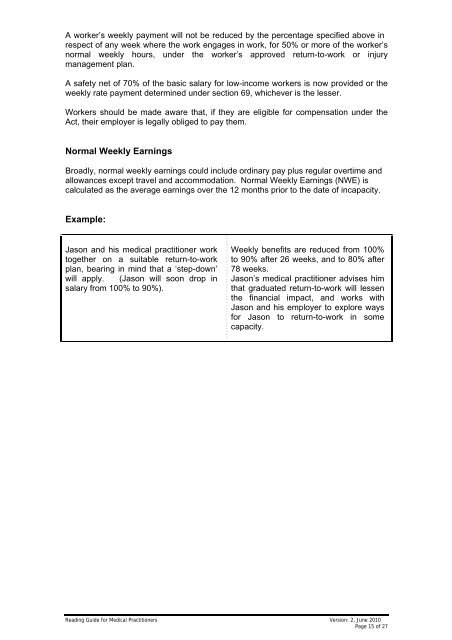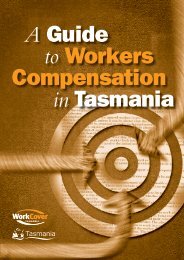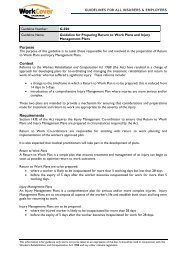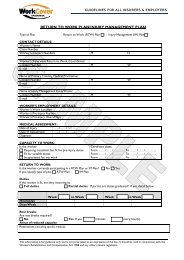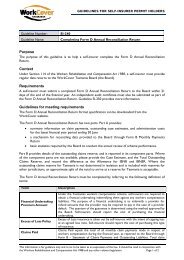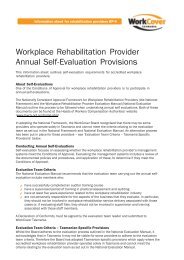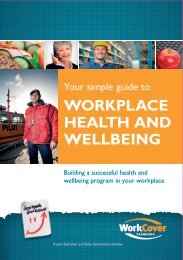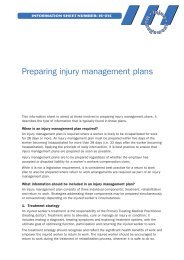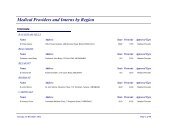Reading Guide for Medical Practitioners - WorkCover Tasmania
Reading Guide for Medical Practitioners - WorkCover Tasmania
Reading Guide for Medical Practitioners - WorkCover Tasmania
You also want an ePaper? Increase the reach of your titles
YUMPU automatically turns print PDFs into web optimized ePapers that Google loves.
A worker’s weekly payment will not be reduced by the percentage specified above inrespect of any week where the work engages in work, <strong>for</strong> 50% or more of the worker’snormal weekly hours, under the worker’s approved return-to-work or injurymanagement plan.A safety net of 70% of the basic salary <strong>for</strong> low-income workers is now provided or theweekly rate payment determined under section 69, whichever is the lesser.Workers should be made aware that, if they are eligible <strong>for</strong> compensation under theAct, their employer is legally obliged to pay them.Normal Weekly EarningsBroadly, normal weekly earnings could include ordinary pay plus regular overtime andallowances except travel and accommodation. Normal Weekly Earnings (NWE) iscalculated as the average earnings over the 12 months prior to the date of incapacity.Example:Jason and his medical practitioner worktogether on a suitable return-to-workplan, bearing in mind that a ‘step-down’will apply. (Jason will soon drop insalary from 100% to 90%).Weekly benefits are reduced from 100%to 90% after 26 weeks, and to 80% after78 weeks.Jason’s medical practitioner advises himthat graduated return-to-work will lessenthe financial impact, and works withJason and his employer to explore ways<strong>for</strong> Jason to return-to-work in somecapacity.<strong>Reading</strong> <strong>Guide</strong> <strong>for</strong> <strong>Medical</strong> <strong>Practitioners</strong> Version: 2, June 2010Page 15 of 27


